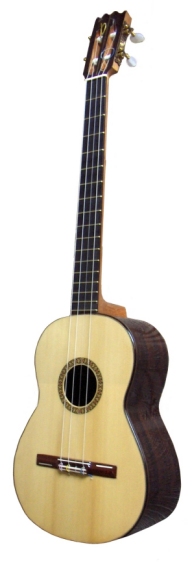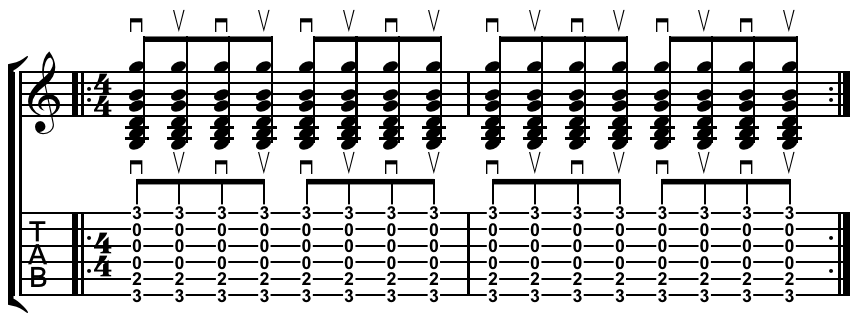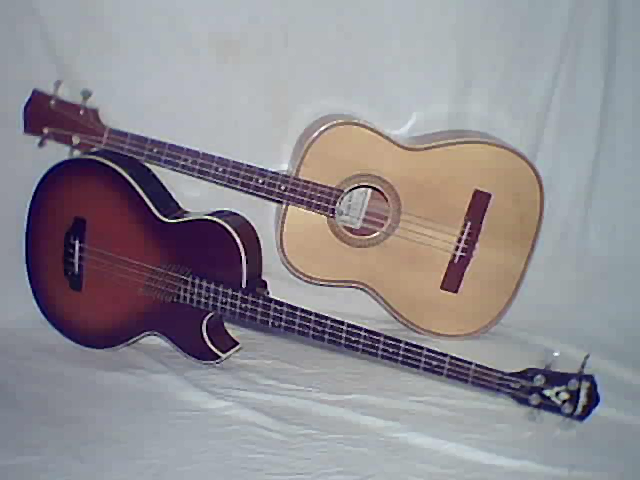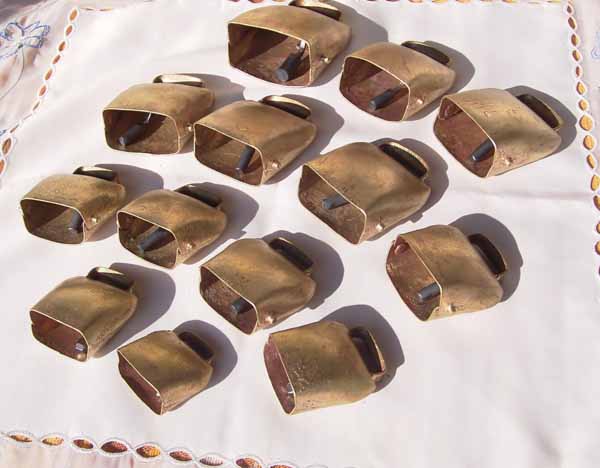|
Coladeira
The ''coladeira'' ( ; , ) is a music genre from Cape Verde. It is characterized by a variable tempo, a 2-beat bar, and (in its most traditional form) a harmonic structure based in a cycle of fifths. The lyrics structure is organized in strophes that alternate with a refrain. The tone is generally joyful and themes often include social criticism. Instrumentation typically includes a guitar, a ''cavaquinho'', and percussion, among others. According to oral tradition, the genre originated in the 1930s when the composer Anton’ Tchitch’ intentionally sped up the tempo of a '' morna.'' In the 1960s, it began to incorporate electric instruments. ''Coladeira'' also refers to a ballroom dance done in pairs accompanied by the music. Genre As a music genre the ''coladeira'' is characterized by having a variable tempo, from ''allegro'' to ''andante'', a 2-beat bar,Brito, M., ''Breves Apontamentos sobre as Formas Musicais existentes em Cabo Verde'' — 1998 and in its most tradition ... [...More Info...] [...Related Items...] OR: [Wikipedia] [Google] [Baidu] |
Morna (music)
The morna (pronunciation in both Portuguese language, Portuguese and Cape Verdean Creole: ) is a Music genre, music and dance genre from Cape Verde. It was proclaimed Intangible Cultural Heritage of Humanity by UNESCO on December 11, 2019. Lyrics are usually in Cape Verdean Creole, and instrumentation often includes cavaquinho, clarinet, accordion, violin, piano and guitar. Morna is widely considered the national music of Cape Verde, as is the fado for Portugal, the Argentine tango, tango for Argentina, the Merengue (music), merengue for Dominican Republic, the Cuban rumba, rumba for Cuba, and so on. The best internationally known morna singer was Cesária Évora. Morna and other genres of Cape Verdean music are also played in Cape Verdean migrant communities abroad, especially in New England in the US, Portugal, the Netherlands, France, West Africa and parts of Latin America. As a music genre As a music genre, the morna is characterized by having a lento tempo, a 2-beat Bar ... [...More Info...] [...Related Items...] OR: [Wikipedia] [Google] [Baidu] |
Cavaquinho
The cavaquinho (pronounced in Portuguese) is a small Portuguese string instrument in the European guitar family, with four wires or gut strings. A cavaquinho player is called a ''cavaquista''. Tuning A common tuning in Portugal is C G A D (non-reentrant with C being the lowest pitch, or from lower to higher pitches). The standard tuning in Brazil is D G B D. Other tunings include: * D A B E – ''Portuguese ancient'' tuning, made popular by Júlio Pereira, reentrant with A being the lowest pitch * G G B D * A A C E * D G B E – used for solo parts in Brazil * G D A E – mandolin tuning * G C E A – ‘''cavacolele''’ tuning, the same as the soprano/tenor ukulele * D G B E – the same as the highest four strings in standard guitar tuning, often used by guitarists, and the same tuning used for the baritone ukulel ... [...More Info...] [...Related Items...] OR: [Wikipedia] [Google] [Baidu] |
Cape Verde
Cape Verde or Cabo Verde, officially the Republic of Cabo Verde, is an island country and archipelagic state of West Africa in the central Atlantic Ocean, consisting of ten volcanic islands with a combined land area of about . These islands lie between west of Cap-Vert, the westernmost point of continental Africa. The List of islands of Cape Verde, Cape Verde islands form part of the Macaronesia ecoregion, along with the Azores, the Canary Islands, Madeira and the Savage Isles. The Cape Verde archipelago was uninhabited until the 15th century, when Portuguese Empire, Portuguese explorers colonized the islands, establishing one of the first Age of Discovery, European settlements in the tropics. Due to its strategic position, Cape Verde became a significant location in the Atlantic slave trade, transatlantic slave trade during the 16th and 17th centuries. The islands experienced economic growth during this period, driven by their role by the rapid emergence of merchants, priva ... [...More Info...] [...Related Items...] OR: [Wikipedia] [Google] [Baidu] |
Cavaquinho
The cavaquinho (pronounced in Portuguese) is a small Portuguese string instrument in the European guitar family, with four wires or gut strings. A cavaquinho player is called a ''cavaquista''. Tuning A common tuning in Portugal is C G A D (non-reentrant with C being the lowest pitch, or from lower to higher pitches). The standard tuning in Brazil is D G B D. Other tunings include: * D A B E – ''Portuguese ancient'' tuning, made popular by Júlio Pereira, reentrant with A being the lowest pitch * G G B D * A A C E * D G B E – used for solo parts in Brazil * G D A E – mandolin tuning * G C E A – ‘''cavacolele''’ tuning, the same as the soprano/tenor ukulele * D G B E – the same as the highest four strings in standard guitar tuning, often used by guitarists, and the same tuning used for the baritone ukulel ... [...More Info...] [...Related Items...] OR: [Wikipedia] [Google] [Baidu] |
Drum Kit
A drum kit or drum set (also known as a trap set, or simply drums in popular music and jazz contexts) is a collection of drums, cymbals, and sometimes other Percussion instrument, auxiliary percussion instruments set up to be played by one person. The drummer typically holds a pair of matching Drum stick, drumsticks or special wire or nylon brushes; and uses their feet to operate hi-hat and bass drum pedals. A standard kit usually consists of: * A snare drum, mounted on a snare drum stand, stand * A bass drum, played with a percussion mallet, beater moved by one or more foot-operated pedals * One or more Tom drum, tom-toms, including Rack tom, rack toms or floor tom, floor toms * One or more Cymbal, cymbals, including a ride cymbal and crash cymbal * Hi-hat cymbals, a pair of cymbals that can be played with a foot-operated pedal The drum kit is a part of the standard rhythm section and is used in many types of popular and traditional music styles, ranging from rock music ... [...More Info...] [...Related Items...] OR: [Wikipedia] [Google] [Baidu] |
Chord (music)
In Western music theory, a chord is a group of notes played together for their harmony, harmonic Consonance and dissonance, consonance or dissonance. The most basic type of chord is a Triad (music), triad, so called because it consists of three distinct notes: the Root (chord), root note along with Interval (music), intervals of a Third (chord), third and a Fifth (chord), fifth above the root note. Chords with more than three notes include added tone chords, extended chords and tone clusters, which are used in contemporary classical music, jazz, and other genres. Chords are the building blocks of harmony and form the harmonic foundation of a piece of music. They provide the harmonic support and coloration that accompany melodies and contribute to the overall sound and mood of a musical composition. The factor (chord), factors, or component notes, of a chord are often sounded simultaneously but can instead be sounded consecutively, as in an arpeggio. A succession of chords is ca ... [...More Info...] [...Related Items...] OR: [Wikipedia] [Google] [Baidu] |
Bass (music)
Bass or Basses may refer to: Fish * Bass (fish), various saltwater and freshwater species Wood * Bass or basswood, the wood of the tilia americana tree Music * Bass (sound), describing low-frequency sound or one of several instruments in the bass range: ** Bass instruments commonly referred to as just "bass", including: *** Bass guitar, the lowest-pitched member of the guitar family *** Double bass, the largest and lowest pitched bowed string instrument *** Tuba, often called "the bass" in the context of brass instruments *** Bass saxophone * Bass (voice type), a type of classical male singing voice * Bass clef, the musical clef used for lower-sounding instruments and voices * Bass music, broad category of electronic dance music genres, focusing on a prominent bass drum and/or bassline sound * Bass note, the lowest note in a chord * Bassline, or bass line, a term used in music for a lower-pitched part * "Bass", a song by Robyn Hitchcock from his 1986 album '' Element of Li ... [...More Info...] [...Related Items...] OR: [Wikipedia] [Google] [Baidu] |
Strum
In music, strumming is a way of playing a stringed instrument such as a guitar, ukulele, or mandolin. A strum or stroke is a sweeping action where a finger or plectrum brushes over several strings to generate sound. On most stringed instruments, strums are typically executed by a musician's designated strum hand (typically the musician's dominant hand, which is often responsible for generating the majority of sound on a stringed instrument), while the remaining hand (referred to as the fret hand on most instruments with a fingerboard) often supports the strum hand by altering the tones and pitches of any given strum. Strums are often contrasted with plucking, as a means of vibrating an instrument's strings. In plucking, a specific string or designated set of strings are individually targeted to vibrate, whereas in strumming, a less precise targeting is usually used. Compared to other plucking techniques, any group of strings brushed in a single sweep by a plectrum could be ... [...More Info...] [...Related Items...] OR: [Wikipedia] [Google] [Baidu] |
Acoustic Bass Guitar
The acoustic bass guitar (sometimes shortened to acoustic bass or initialized ABG) is a bass instrument with a hollow wooden body similar to, though usually larger than, a steel-string acoustic guitar. Like the traditional electric bass guitar and the double bass, the acoustic bass guitar commonly has four strings, which are normally tuned E-A-D-G, an octave below the lowest four strings of the 6-string guitar. Because it can sometimes be difficult to hear an acoustic bass guitar without an amplifier even in settings with other acoustic instruments, most acoustic basses have pickups, either magnetic or piezoelectric or both, so that they can be amplified with a bass amp. Traditional music of Mexico features several varieties of acoustic bass guitars, such as the guitarrón, a very large, deep-bodied Mexican 6-string acoustic bass guitar played in Mariachi bands, the león, plucked with a pick, and the bajo sexto, with six pairs of strings. Also another name can be Baj ... [...More Info...] [...Related Items...] OR: [Wikipedia] [Google] [Baidu] |
Cowbell (instrument)
The cowbell is an idiophone hand percussion instrument used in various styles of music, such as Latin and rock. It is named after the similar bell used by herdsmen to keep track of the whereabouts of cows. The instrument initially and traditionally has been metallic; however, contemporarily, some variants are made of synthetic materials. Origins While the cowbell is commonly found in musical contexts, its origin can be traced to freely roaming animals. In order to help identify the herd to which these animals belonged, herdsmen placed these bells around the animal's neck. As the animals moved about the bell would ring, thus making it easier to know of the animal's whereabouts. Though the bells were used on various types of animals, they are typically referred to as "cowbells" due to their extensive use with cattle. Tuned cowbells Tuned cowbells or ''Almglocken'' (their German name, ‘Alm’ meaning a mountain meadow, and ‘Glocken’ bells), sometimes known by the ... [...More Info...] [...Related Items...] OR: [Wikipedia] [Google] [Baidu] |
Güiro
The güiro () is a percussion instrument consisting of an open-ended, hollow gourd with parallel notches cut in one side. It is played by rubbing a stick or tines (see photo) along the notches to produce a ratchet sound. The güiro is commonly used in Cuban, Puerto Rican, and other forms of Latin American music, and plays a key role in the typical rhythm section of important genres like son, trova and salsa. Playing the güiro usually requires both long and short sounds, made by scraping up and down in long or short strokes. The güiro, like the maracas, is often played by a singer. It is closely related to the Cuban guayo, Dominican güira, and Haitian graj which are made of metal. Other instruments similar to the güiro are the Colombian guacharaca, the Brazilian reco-reco, the Cabo Verdean ferrinho, the quijada (cow jawbone) and the frottoir (French) or fwotwa (French Creole) ( washboard). Etymology In the Arawakan language, a language of the indigenous people of ... [...More Info...] [...Related Items...] OR: [Wikipedia] [Google] [Baidu] |
Bass Guitar
The bass guitar (), also known as the electric bass guitar, electric bass, or simply the bass, is the lowest-pitched member of the guitar family. It is similar in appearance and construction to an Electric guitar, electric but with a longer neck (music), neck and scale length (string instruments), scale length. The electric bass guitar most commonly has four strings, though five- and six-stringed models are also built. Since the mid-1950s, the bass guitar has replaced the double bass in popular music due to its lighter weight, smaller size, most models' inclusion of Fret, frets for easier Intonation_(music), intonation, and electromagnetic pickups for amplification. Another reason the bass guitar replaced the double bass is because the double bass is "acoustically imperfect" like the viola. For a double bass to be acoustically perfect, its body size would have to be twice as that of a cello rendering it unplayable, so the double bass is made smaller to make it playable. The elect ... [...More Info...] [...Related Items...] OR: [Wikipedia] [Google] [Baidu] |








